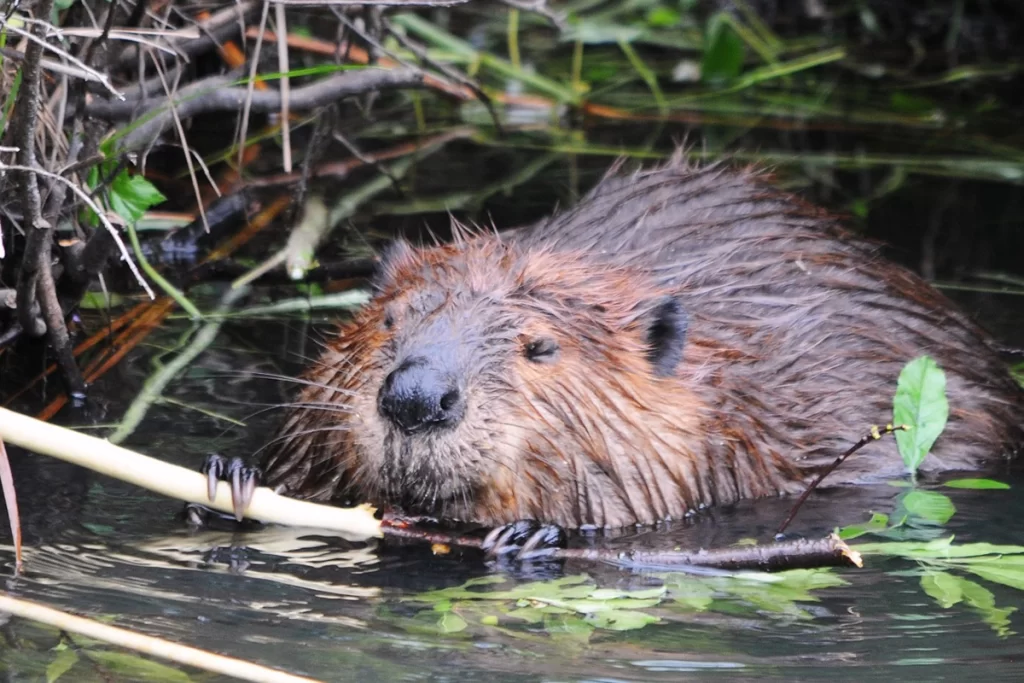Beavers are fascinating creatures known for their incredible engineering skills and their ability to shape the environment around them. In this article, we will explore some fun facts about beavers and learn more about these unique animals.

- Beaver Species and Habitat: There are two species of beavers: the Eurasian beaver (Castor fiber) and the North American beaver (Castor canadensis). Both species are primarily found in temperate regions of the Northern Hemisphere. Beavers inhabit freshwater ecosystems such as rivers, streams, lakes, and ponds.
- Adaptations for Aquatic Life: Beavers are well adapted for their semi-aquatic lifestyle. They have several physical characteristics that enable them to thrive in water. Firstly, they possess webbed hind feet, which help them navigate through water with ease. Their large, flat tails serve multiple purposes such as balance, communication, and as a rudder while swimming. Additionally, beavers have a transparent, protective membrane that covers their eyes while underwater.
- Impressive Size: Beavers are the second-largest rodents in the world, after the capybara. Adult beavers can grow up to 3 to 4 feet in length, excluding their tail, which can add an additional 10 to 18 inches. They can weigh anywhere from 35 to 70 pounds, with males typically being larger than females.
- Extraordinary Teeth: One of the most notable features of beavers is their impressive teeth. Their two front incisor teeth are large, sharp, and continuously growing. Beavers must gnaw on wood regularly to keep their teeth from overgrowing. They are capable of felling trees, as their teeth are strong enough to chew through wood effortlessly.
- Building Dams and Lodges: Beavers are renowned for their exceptional engineering skills. They construct dams by felling trees and using branches, mud, and rocks to create barriers across rivers and streams. The dams serve multiple purposes, including creating deep water habitats, providing protection from predators, and enabling easier access to food sources. Beavers also build lodges, which are dome-shaped structures made of branches, twigs, and mud. These lodges have underwater entrances, providing the beavers with safe and cozy living spaces.
- Environmental Impact: Beavers have a significant impact on the environment. By building dams, they alter the flow of water, creating wetlands and floodplains. These wetlands provide essential habitats for various plants, insects, birds, and other wildlife. Beavers’ activities can also help improve water quality by trapping sediment and filtering pollutants.

7. Herbivorous Diet: Beavers are primarily herbivores, and their diet consists mainly of bark, twigs, leaves, and aquatic plants. They are particularly fond of tree species such as aspen, willow, birch, and cottonwood. Beavers are known to be selective feeders, often felling trees that suit their dietary preferences.
8. Lodges as Family Homes: A beaver lodge serves as a home for a family unit, usually consisting of a monogamous pair, their offspring, and sometimes the previous year’s young. The lodge provides warmth and security during the harsh winter months. Inside the lodge, beavers create separate chambers for sleeping, eating, and raising their young.
9. Communication through Scent: Beavers use scent marking as a means of communication. They have scent glands located near the base of their tail, which they use to mark their territory. These scent marks contain oils that are specific to each beaver, allowing them to recognize each other and establish their boundaries.
10. Nocturnal Behavior: Beavers are primarily nocturnal animals, meaning they are most active during the night. They spend their days resting in their lodge or tending to maintenance tasks. By being active at night, beavers can minimize the risk of encounters with predators and focus on their construction and foraging activities.
11. Impressive Swimming Abilities: Beavers are excellent swimmers, thanks to their unique adaptations. They can hold their breath for up to 15 minutes and swim at speeds of 5 miles per hour. Their dense fur acts as insulation and helps them maintain body temperature in cold water. Additionally, beavers can close their ears and nostrils while underwater, preventing water from entering.
12. Conservation Success: Both the Eurasian and North American beaver populations have faced significant declines due to hunting and habitat loss. However, conservation efforts have been successful in restoring their populations in many regions. Beavers are now protected in several countries and are considered a valuable keystone species due to their positive impact on ecosystems.

In conclusion, beavers are remarkable creatures with unique adaptations and behaviors. From their impressive engineering skills to their impact on the environment, these semi-aquatic rodents play a vital role in shaping the ecosystems they inhabit. Learning about beavers gives us a greater appreciation for the intricate web of life and the incredible diversity found in nature.